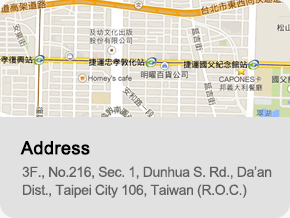

Principle for Ametropic Correction of iLASIK Surgery
Procedures of Surgery
Introduction to Characteristic of Various Equipments
Selection of Surgery (Indication and Price)
Dos and Don'ts before and after Surgery

Dos and Don'ts before and after Surgery
I. Ten examinations before iLASIK surgery
1.Diopter before dilation of pupil: Utilize computer optometry instruments to measure the power of short-sightedness and astigmatism.2.Curvature of the cornea: Utilize computer optometry instruments to measure the curvature of cornea.
3.Measurement of intraocular pressure: Select normal intraocular pressure to avoid patients who suffered glaucoma.
4.Corneal topographer: Examine the size of cornea and pupil, the thinnest point of cornea, thickness of each part of cornea, depth of anterior chamber, kappa angle between optic axis and visual line, require precision in strength of astigmatism of cornea, mapping of curvature, mapping of corneal epithelium and endothelium.
5.Diopter of glasses: For reference use in optometry.
6.Optimal vision correction: Check out the optimum diopter.
7.Thickness of cornea: Measure the thickness of cornea precisely.
8.Schirmer test: Measure the quality and quantity of tears.
9.Diopter after dilation of pupil: Relax ciliary’s muscle to avoid pseudo myopia.
10.Ophthalmoscopic examination: Examine and confirm whether retina and macula have degeneration or hole or not.
It will take about 60minutes to finish the above examinations and then discuss with doctors about the diopters need be corrected. On the day of examination just before surgery, as it need do pupil dilation, patients shall take public transport as much as possible without motorcycle riding or car driving.
II. What kind of people is suitable for iLASIK surgery?
1. At least 18 years old and above;2. The diopter of myopia is stable without increase anymore within one year;
3. No other serious eye diseases or illness except refractive errors.
4. No pregnancy.
5. Cornea is moderately thick or too thin;
6. Curvature of cornea is moderate, too flat or steep;
7. Be afraid of blade in operation;
8. Low, middle and high myopia (less than 12 diopters of myopia, including astigmatism);
9. Diopter of astigmatism is too high (more than 1.25 D)
10. The size of pupil at night is too large (more than 5.5mm);
11. Want to avoid night glare and overlapping images after operation;
12. No systemic diseases or autoimmune diseases;
13. Unwilling or unable to wear glasses or contact lenses;
14. Eyes have unequal vision that leads to the troubles in daily life.
III. Dos and Don'ts on the Day of Surgery
1. Please come for operation accompanied by a friend or relative on the day of surgery;2. Try not to wear contact lenses before operation;
● Must stop wearing hard contact lenses 2 weeks before operation
● Must stop wearing soft contact lenses 3 days before operation
3. Never use cosmetics around eyes (e.g. eye shadow, mascara or eye liner) on the day of surgery and clean the part around eyelid as much as possible before operation;
4. Wear comfortable clothes (wide-necked jacket or loose trousers, short trousers would be better, do not wear pullover);
5. Can have normal diets before operation;
6. Do not wear any ornaments and use perfume, essential oil or cologne on the day of surgery.
IV. Dos and Don'ts in iLASIK Surgery
1. Keep a light-hearted mood, and it would take about ten minutes to complete the surgery on two eyes.2. Use eye speculum to prop the eyes open and inject local anesthetics to surface, and focus the eyes at the glittering red light in the course of operation.
3. Would have sound and peculiar smell in the operation, which is a normal phenomenon.
V. Dos and Don'ts after Surgery
1. On the day just after surgery, you may have a little lacrimation, foreign body sensation, photophobia, blurred vision, etc. Do not worry about it, because four or six hours later, the vision would be better. And you should try to sleep for a rest after back home, if so, the abovementioned symptoms would be improved obviously and disappeared gradually one day later, moreover, the naked distant vision would be improved obviously too. However, if suffered high diopters, the person’s vision would be restored slower.2. If going out after surgery, you had better wear goggles or zero-power glasses to prevent from wind and sun.
3. Medication after surgery: The oral dose of medicine for inflammation and pain prevention should be taken four times one day. The steroidal, antibiotic and artificial tears eye drops shall be applied based on doctor’s instructions.
Steroidal eye drops: assistance in healing of wound.
Antibiotic eye drops: Prevent wound from inflammation and infection
Artificial tears: Lessen dryness of eyes
4. Return visit time: Please return for a visit followed by the doctor’s order.
5. In the following three days after surgery, you should wear patch when sleeping at night to prevent cornea from pressing or rubbing, pay attention to personal hygiene, and try to avoid touching eyes by hands for bacterial infection or corneal dislocation prevention.
Bath: Avoid water going into eyes to prevent eyes from discomfort.
Shampoo: Go to beauty salon for a shampoo as much as you can or wear aero-power goggles to wash your hair.
Face washing: spread facial cleanser on face except the part around eyes and mop it up with wet towel.
VI. Discomforts and Sequela after Laser Surgery
1.Dry eyes: May cause dry eyes after surgery (will be fully recovered three to six months later). False medication and excessive fatigue will also lead to dry eyes, which can be treated by inserting a lachrymal duct without an operation, quick and safe, automatically dissolved 1-2 weeks later.
2.Glare: You may feel that the car lights or beams are harsh to your eyes, usually caused by the change of pupil size (become small in daylight, while large at night), which are easily happened to those people who have high diopters and thin cornea. This discomfort glare would be disappeared two months later.
3.Photophobia: May be sensitive to light within 2 weeks after surgery, which can be improved by wearing sunglasses and disappeared about two months later.
4.Change of vision: May have slight visual change in the daylight and evening, but will be stabilized gradually. Usually, the far-sighted patients’ vision may be restored one month later, more quickly than near-sighted patients’.
5.Increase in intraocular pressure: A few people may be sensitive to steroidal anti-inflammatory drugs, leading to the increase of intraocular pressure. Once stopping using it and applying suitable intraocular pressure lowering drug for a short time, it can be restored after about one month.
1.Under-correction and regression: Some patients’ vision tends to be near sighted again some time (within six months) later after laser surgery, this is what be called “regression”. Usually, the regression of vision is slight, commonly happening to those people who are suffered high diopters. It can be corrected again under the doctors’ confirmation after the evaluation.
2.Over-correction: If feeling over corrected frequently, it can be corrected back normal again after a time.
3.Irregular astigmatism: Only a few patients will have the problems of irregular astigmatism three months later after surgery. For serious ones, it can be corrected by wearing glasses (or contact lenses) or treated by laser surgery again.
4.Corneal inflammation or ulcer: Small probability, less than one thousandth, because the laser itself has functions in killing bacterium. However, it is necessary to keep clean till the corneal epithelium is healed. In the event of infection, doctors will use antibiotic to treat it based on the kinds of pathogenic bacteria.


